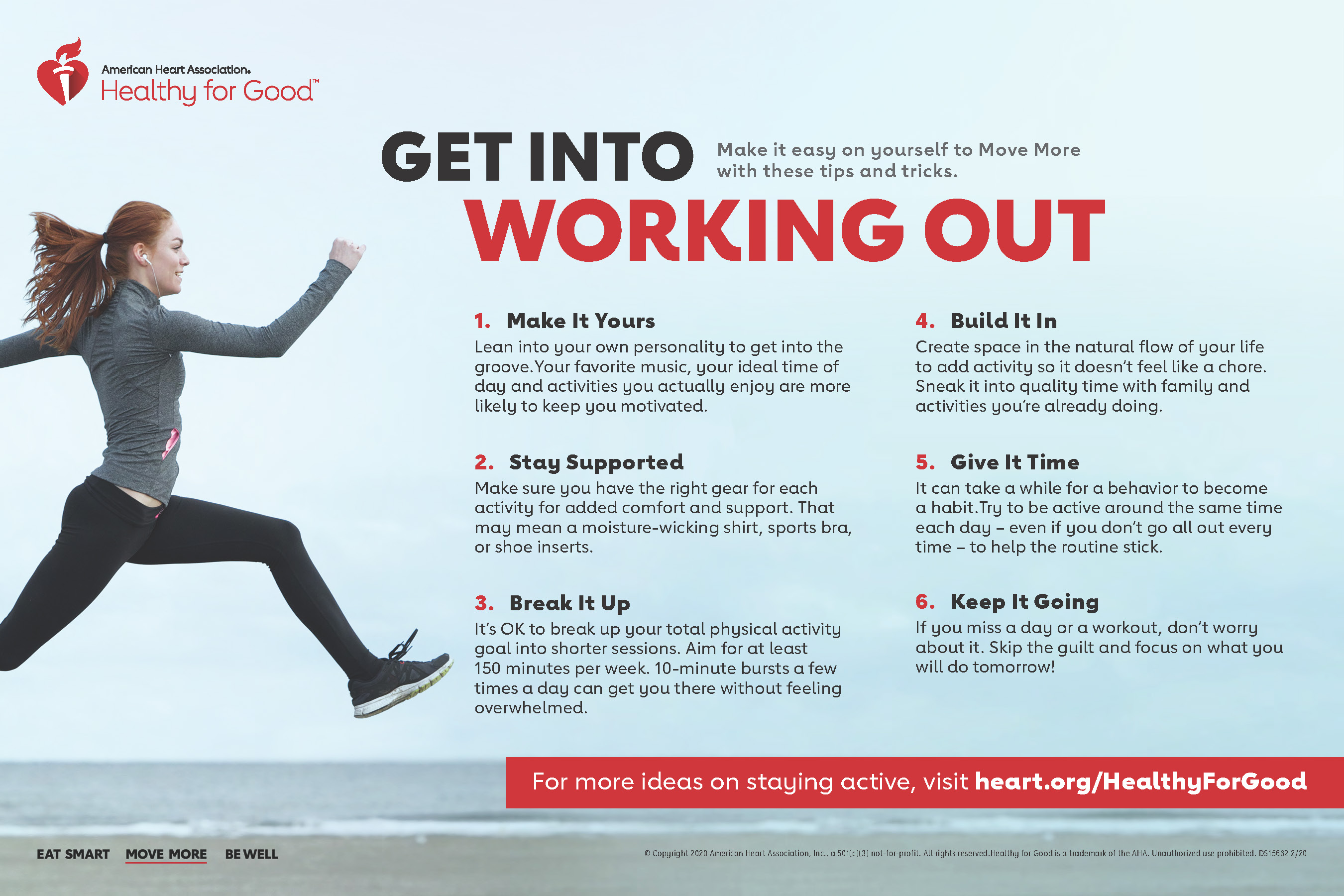Student Health Services at Moffitt Health Center
Exercise and Fitness
Page Content
Exercise has been shown to have several health benefits, such as reducing your risk for many diseases, increasing immunity, and giving you more energy. An exercise program should include cardio, strength training, and flexibility.
For basic cardiovascular exercise benefits, strive to exercise 3-4 days a week for 20 minutes (this amount can be broken up into smaller sessions throughout the day such as two 10 minute walks). Increase this amount if you are trying to lose weight or increase your fitness level.
Total body strength training is encouraged at least twice a week. Use a weight that you can lift for 8-12 repetitions (too light is not as affective; too heavy can lead to injury).
To maintain flexibility, stretching after cardio and strength exercise should be done. Not stretching can limit your range of motion over time.
150 minutes per week of moderate-intensity aerobic activity OR 75 minutes of vigorous aerobic activity (or a combination of both)
Aerobic exercises are activities that provide cardiovascular conditioning. Aim for a minimum of 30 minutes 5 to 7 days a week.
Benefits
- Decreases risk of heart disease
- Lowers blood pressure
- Helps better manage blood sugar
- Improves lung function
- Lowers resting heart rate
Low Impact Aerobic Activities
- Swimming
- Cycling
- Walking
- Rowing
High Impact Aerobic Activities
- Running
- Jumping Rope
- Step Aerobics
Anaerobic exercises are activities that are short, fast, and high-intensity. Uses energy already present in your muscles.
Benefits
- Strong bones
- Burns fat
- Build muscle
- Maintain muscle mass
Types of Anaerobic Activities
- High Intensity Interval Training (HIIT)
- Heavy weight lifting
- Calisthenics - jump squats, box jumps, plyometrics
Start Slowly - listen to your body and your doctor...
For moderate endurance exercise, simply walk a little further each time you exercise and gradually increase the pace of your walks as the weeks pass. For strength exercise, lift a weight that you usually lift but do it more times than normal. Before beginning an aggressive exercise program, you should see your doctor or an exercise professional for screening tests and program advice.
The biggest risk to exercise is not starting.
You should consider several factors when choosing an aerobic activity for your personal fitness program:
- Impact: Some activities involve jumping or pounding that may be uncomfortable or can lead to injury. Swimming, cross country skiing, in-line skating, cycling, and rowing are easier on the joints.
- Convenience: Some aerobic activities require expensive equipment, are seasonal, or are not readily available in certain locations.
- Skill: Activities that require a lot of skill may discourage you. Try to avoid activities that do not fit with your skill base, and don't quit before you've developed the skills you need for the activity to become enjoyable.
- Social factor: Exercising with a group can be fun and beneficial. Sometimes exercising with other people is such fun that you're more likely to continue your fitness program. For safety reasons, some aerobic activities are best done with a group.
Make a Plan
Decide what you want to do, where you are going to do it and when you are going to do it. Write it down in your calendar. The more thoroughly you plan an exercise routine, the easier it is to stick with it.
Set a Goal
If you have something to work towards, it will give you the extra motivation you need to stick with it. Your goal can be anywhere from running a 5K, being able to do 20 push-ups or losing 5lbs.

Campus Recreation is housed in the Payne Center on the Hattiesburg campus. Students, faculty, and staff are invited to participate in a number of wellness opportunities, from aquatics, to group exercise and free weights, to personal training, outdoor programs, and intramural sports. Information about upcoming events, classes, and other activities can be found by visiting the Campus Recreation page.
·